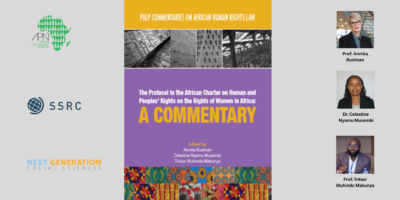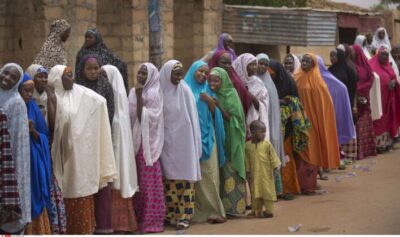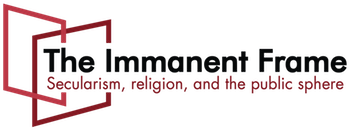It is clear from the ongoing discussion about “Religion in the public sphere” that we live in an age when many inside and outside of the academy are thinking and talking about religion—specifically about religion in public and whether it ought to be there. Many are turning their attention to the relation among religion, law, and politics, now that the once-common theories about the inevitable march of (what is commonly understood as) secularization have been mostly discredited. Such theories were based on an erroneous interpretation of the Enlightenment as a monolithic force that discounted religion, and on the view that modernity would necessarily usher in secularism, that is, launch an age in which religion had no significant standing. Yet most have come to realize that religion as an intellectual, cultural, and political force is not, in fact, waning on the globe.
To help us think about religion in the public and political landscape, I propose a model—what I call Public Landscape as Varied Topography—in which there is room for various socio-political stances, religious or otherwise. With this model, I challenge those who would attempt to render religion safe in democracies by relegating religious belief and practice to the private sphere. I also challenge those who claim that a vital, robust democracy requires a religious citizenry (that is, those who would essentialize and privilege “religion” as a unique and indispensable moral resource for the health of the nation). My assessment of Rawls and Habermas will build on Taylor and Eberle in their critiques of what Eberle, in this discussion, has called the “differential treatment of the religious and the secular,” or of what Taylor calls the “epistemic break between secular reason and religious thought.”
We can imagine various models for the place of religion in democratic societies, for example, Religion Over the Public Landscape (in which religion is necessary for the health of public and political life); and its opposite, Religion Banned from the Public Landscape (in which religion is kept mostly out of public and political life). Notice that in my favored model, Public Landscape as Varied Topography, “religion” is not in the title. In this model, religion is not initially treated as a special case. One does not decide in advance who may speak or what kind of arguments one may offer in public and political debate. A working assumption in this model is that public voices will usually be varied in form and content. Some voices may be explicitly religious; others may be explicitly non-religious. But these distinctions do not matter, according to this model, because no voice is treated as a special case. Or, to say the same thing differently, liberty of conscience and freedom of speech deem that each voice is a special case worthy of a hearing.
This model makes no predictions about whether allowing a varied public topography is likely to produce more conflict or more harmony. In some instances it may lead to divisiveness, in others to accord. But in any case, harmony, often a worthy aim, is not usually the most salient issue. More salient is attention to open and inclusive conversation, debate, and participation in democratic institutions.
Now, after having noted in what ways religion should not be treated as a special case, this model goes on to acknowledge that, in some sense, religion is a special subject (in light of particular socio-historical circumstances). Given the history of religion in the U.S.— which includes religious persecutions on the one hand and religious revivals on the other—Americans tend to be both religious and wary of religion. There are highly charged issues that pertain to religion in the U.S. that would not merit consideration in other societies. Different societies, different histories, different concerns. In U.S. society, if a belief or practice is associated with religion, that may be enough for it to become controversial if it enters the public space of government or education. This is, in part, because, from our history of religion, we have learned some lessons of caution.
Now, while the Public Landscape as Varied Topography model certainly does not seek to introduce unnecessary conflict, and wishes to contribute to accord where needful, it does nonetheless focus more on honoring the First Amendment than on the reduction of social discord. It seeks to prohibit the government from officially sponsoring religion, on the one hand, and to guarantee the free exercise of religion, on the other. How, in practice, does this model support both clauses? I wish to offer a couple of applications of this model in order to lend specificity to my theoretical reflections.
The model allows religious voices in public and political debate while disallowing state funding and actions that promote any particular religion. The model, then, would largely support U.S. Supreme Court decisions since the 1960s that have, on the one hand, prohibited state sponsored school prayer, and, on the other hand, have allowed public schools to teach about religion—that is, to study religion as an academic subject. This distinction is crucial and reflects the spirit of my favored model: it prevents the state from promoting a particular religion while permitting the state to host the study of, and thereby provide a forum for, religious diversity. Indeed, both acts—forbidding school sponsored prayer and educating students about diverse religious traditions—work in concert as a powerful educational lesson, teaching students about living, working, playing, and debating in a pluralistic society. Studying diversity in this fashion is one of our best avenues to greater social understanding and tolerance on matters pertaining to religion.
Turning now to a different application of the model, let us consider the recent entry of evangelical Christians into public and political debate about climate change and other environmental policies. Increasingly, evangelical Christian organizations have been criticizing the Bush administration’s appalling record on the environment. These conservative Christians are bringing to public debates about environmental policy distinctive theological arguments that refer to the goodness of the natural world and to the biblical obligation to protect all of creation. This obligation, for them, entails political action. The Evangelical Environmental Network, for example—which is concerned about the relation between hurricanes, climate change, and the poor—is lobbying Congress to enact laws to stem global warming.
The proposed model would allow into the public realm these evangelical voices and their religious arguments that address environmental policy. It would not, however, permit government funding for evangelical groups to administer environmental programs, insofar as these groups promote a distinctively theological point of view in the delivery of services. If recycling programs, mercury removal projects, or reduction of carbon emission programs were justified by appealing, for example, to the biblical obligation to care for the environment, they would be deemed unconstitutional forms of state sponsorship of religion.
Again, reduction of conflict is not the chief goal of my model. Still, I cannot help but hope and even believe that acknowledging and honoring our differences in public and political arenas will lead to a more cooperative society. Welcoming the many and varied voices is not only the right thing to do—legally and morally—but it may also be the most strategic way to draw on a powerful, yet still latent, source of strength in pluralistic democratic societies—the vitality of their diversity.
I have argued, then, that we should not attempt to shield civil society from division and conflict by attempting to keep religion out of public and political debate. While I appreciate why many are wary of religion in public, I am convinced that the risk of allowing religion in public and political exchange is not as great as the promise of inviting it in. To my mind, this goes to the heart of the promise of a dynamic democracy in which diversity of perspective is brought to bear on common projects.
What is the relation between my favored model and related themes in the work of Rawls and Habermas? Earlier in his career, Rawls seemed to share Richard Rorty’s wish that religion stay out of public life. But later, in Political Liberalism, Rawls prohibited the public exchange of religious arguments only when addressing “constitutional essentials and questions of basic justice.” Nonetheless, in either the more or less restrictive case, citizens whose outlooks are informed by religion are still required to refrain from making reference to this profound aspect of their identity when engaging in significant political deliberation and debate.
I find this Rawlsian restriction on religious arguments problematic for the following reasons:
- Psychologically, it is not clear to me that people (including legislators) can so neatly uncouple aspects of their identity.
- Politically, it is not clear to me that we want some citizens to repress the actual reasons that tacitly support the only kind of public expression of reasons that Rawls will permit (on this point, see Jeffrey Stout’s Democracy and Tradition)
- Juridically, it is not clear to me that we can draw a pragmatically useful and meaningful line between “questions of basic justice” and all the other (lesser yet related) issues that pertain to questions of justice and the nature and arrangement of our public institutions.
- And epistemologically, it is not clear to me that what Rawls calls “public reason” can in fact be defended as “the reason of citizens,” that is, as an inclusive style of deliberation that can be said to be acceptable to all reasonable persons.
This epistemological doubt is intensified, not weakened, when Rawls, in the “Introduction to the Paperback Edition” of Political Liberalism, permits comprehensive religious doctrines to enter into public reason, provided that “in due course public reasons … are presented sufficient to support whatever the comprehensive doctrines are introduced to support.” This new concession is essentially offering this: an argument wearing the cloth of religion may be permitted provided that at some point the religious vestments are removed, thus allowing public reason to appear. The only religious argument that can be permitted and trusted, then, is one that could initially have been stated in other terms, namely, in the terms of public reason. And yet this very idea of perfect translation from “non-public, religious reason” to “public reason” is precisely what gives me pause. Can we make sense of these separate languages? And even if we can, is a translation always possible? How long must we wait for the acceptable translation? And why must this burden of translation be placed on the religious?
In Rawls’s stipulated usage, public reason is by definition restrictive. It intentionally keeps out what Rawls calls the “background culture with its many forms of nonpublic reason.” But we ought to wonder: are there not interesting and helpful perspectives embedded in “nonpublic reason” that, in Rawls’s model, would never be allowed to have a bearing on essential and basic matters of justice? Can a line be reasonably drawn between public and nonpublic (private) reason? How is the line to be drawn? The noble Enlightenment hope in public reason should be reformulated, not as Rawls’s hope in public reason trumping nonpublic reason, but as a democratic hope in a lively, rough-and-tumble political process of free and open exchange. This process of exchange—this alternative view of “public reasoning,” namely, the public (citizens) reasoning with each other—is not limited by what all “might reasonably be expected to reasonably endorse.” Rather, this process acknowledges that what is reasonable to endorse is itself debatable, and that some voices in the debate will not always be deemed reasonable by others in the debate. This unkempt process, in my view, goes to the heart of a democracy that honors diversity, equality, and liberty of conscience.
To his credit, Habermas grasps the moral significance of religious perspectives in citizens’ democratic deliberation, and hence he does not attempt to relegate religion to the private realm. Unfortunately, however, he does relegate religion to its own, separate sphere. He writes of religion as if it were a distinctive, sui generis way of thinking or believing. “Religious language” becomes a special language—something set apart from other kinds of languages. This way of thinking about religion, in my view, does not hold up under scrutiny. Religion is a contested umbrella term that has no essential core, no essential form, no essential content. Habermas seems to hold what is sometimes called an “expressive” view of religion: religion expresses moral and aesthetic emotions and perspectives that philosophy (and other forms of secular discourse) could articulate but haven’t yet managed to, or perhaps never will be able to, given the discursive nature of philosophy and the expressive nature of religion. I find this view of religion unconvincing and unhelpful.
It may be empirically true that, given where and how most Americans, for example, are morally educated, to keep such historical religions as Christianity, Judaism, and Islam out of the public life would be to deprive the republic of significant moral resources. But this claim is based on a contingent state of affairs and one that is subject to change. Religion, whether conservative or progressive, is not an essentialistic feature of the moral life. And there is no essential core to religion that requires translation for the good of the republic. So, while I applaud Habermas’s generous efforts to permit religion in the democratic deliberation among citizens, I oppose the way he treats religion as a discrete “language” that is of a different kind from such (so-called) secular discourse that is found in philosophy or in legislative assemblies.
Let me close by noting that while I believe my favored model has legal and constitutional standing, it is not strictly a legal model. For the model to be successful, it must be rooted in and informed by the normative and cultural manners and the character of a nation and its (diverse) citizens. It must critically engage with a society’s democratic culture and laws, its ideals and institutions, its normative reflection and legal constitution. This cultural and socio-historical matrix will inform how we engage with each other in our democratic deliberation: how we express our views skillfully and speak tactfully to our audience, how we offer reasons for our views and listen carefully to those offering counter reasons. And for this reason I believe that our focus should no longer be on religion in public and whether it ought to be there, but rather on the kind and quality of conversation and debate that exemplifies the skills and virtues of democratic public engagement.












Thanks for your insightful post. Below is the bulk of my response to it, which I’ve posted on my blog:
As much as Cladis attempts to offer his model as a successful alternative to religious domination or marginalization, I’m not convinced that the “variegated” public landscape he maps out takes religion seriously enough, or is self-critical enough concerning “the public sphere.”
As an example, here are two assertions made by Cladis, each of which seems to put the other in question:
“A working assumption in this model is that public voices will usually be varied in form and content. Some voices may be explicitly religious; others may be explicitly non-religious. But these distinctions do not matter, according to this model, because no voice is treated as a special case. Or, to say the same thing differently, liberty of conscience and freedom of speech deem that each voice is a special case worthy of a hearing.”
…but then:
“The Evangelical Environmental Network, for example—which is concerned about the relation between hurricanes, climate change, and the poor—is lobbying Congress to enact laws to stem global warming.
The proposed model would allow into the public realm these evangelical voices and their religious arguments that address environmental policy. It would not, however, permit government funding for evangelical groups to administer environmental programs, insofar as these groups promote a distinctively theological point of view in the delivery of services.”
Cladis’s point in arguing that “religion is not special” is that religion is not categorically special, but rather shares a place in a variegated public with other voices. This is clear enough in his description of free exercise, but when he moves to the question of establishment it appears that religion is quite “special,” and not in a way that can be approved for public consumption. Does Cladis’s change of policy stem from the fact that we’re not dealing with religious “voices” now, but rather a “delivery of services”? Such justification seems rather weak to me. Presumably (in this model), a public investment in public religion (via its services) accepts such services on the basis of a religion that has already been deemed “not a special case” as regards its public voice… that is, on the basis of the public argument made by this religious voice for public programs without particular reference to the religion as a public good itself. What, then, prevents government funding for religious programs that have not been proposed by a special religious voice, not been accepted by special religious criteria, and not been enforced for special religious reasons?
In other words, what changes between the “initial” case that Cladis speaks of and the eventual exclusion of religion from the public sphere? He writes, “this model goes on to acknowledge that, in some sense, religion is a special subject (in light of particular socio-historical circumstances).” Does this mean that its special status is circumstantial? If so, how strong an argument can he really make? Does this model then offer any prescriptive word to situations of Shari’a tradition or secularist regimes? It doesn’t seek to alter an American form of separation, but would it try to impose one in a different societal situation? I don’t think it could, if it tried.
So the model seems stuck between being a) incoherent because of its leap from public religious voice to disallowance of religious sponsorship, or else b) impotent before custom and historical circumstance in modeling anything about whether and how religion is a “special subject” in public life. I think this results from the fact that it is still more or less rooted in a secularist framing of the public that cannot understand religion properly… rather than stopping at critiquing Habermas’s conception of religion as a “special language,” Cladis should recognize that he is setting up the language (or the language rules) of secular public discourse as “special,” when it is in reality nothing of the sort.
“Nothing and Everything Special About Religion”
In his response to my post, “Nothing Special about Religion,” Evan Kuehn inspires the following question: If my favored model (Public Landscape as Varied Topography) does not treat religion as a special case, why place constraints on government funding for religious organizations? Does my model allow the religious to have merely a voice in public, but not an active body and agency? But my earlier point about not treating religion initially as a special case was to emphasize that the religious voice should be welcomed and treated like all other public voices that may or may not be associated with comprehensive views. There is nothing “mere” or trivial about speaking publicly: it is a vital democratic practice. Moreover, as I went on to note in my post, religion in some ways is a special case. It is, for example, addressed by the U.S. Constitution. The establishment clause in the First Amendment prohibits the federal government from establishing—officially funding or otherwise sponsoring—religion; it also guarantees the free exercise of religion. Government, in short, can neither espouse religion nor prohibit citizens’ religious activity. This is a salient aspect of our local history and culture—our particular socio-historical circumstances—as Americans.
Although there is no detailed blueprint for how to apply the prohibition of the First Amendment, its spirit is clear: government is to refrain from explicit religious endorsement and from supporting religious proselytism. Historically, this prohibition has not automatically disallowed government from funding religious charitable organizations, providing that the delivery of services was free of proselytism and government endorsement. My model would support this historical precedent; it would not, however, support President George W. Bush’s “Faith-based and Community Initiatives.”
This multi-billion dollar set of initiatives is not about welcoming the religious voice to participate in ongoing civic conversations (as I think the religious voice should be welcomed). Rather, it is about aggressively wooing and funding religious organizations to administer public social services in the very manner that makes many religious and nonreligious citizens alike justifiably nervous about religion in government and government in religion. The White House’s publication, “Partnering with the Federal Government,” assures religious organizations seeking funding that they need not be anxious about Constitutional issues pertaining to church and state. It comforts them, “Don’t be put off by the term ‘inherently religious’” in the Supreme Court’s prohibition of government funding for inherently religious activities. It promises that if religious organizations receive government funding, they may invite their social service clients to their religious services and events; they may even conduct such religious activities as prayer in the presence of those whom they are serving, for example, offering prayers before a meal at a soup kitchen. Moreover, those offering the prayers, who are employed with tax-payers’ dollars, may even be deemed qualified for their employment on the basis of their religious beliefs. By executive order, President Bush has sidestepped the Civil Rights Act, allowing federally funded, faith-based organizations to hire on the basis of religion. The clients in these social service programs are often subjected to proselytizing, for the few prohibitions against proselytism that do exist are not enforced by the government.
Given that over 95 percent of these federally funded religious organizations are Christian, and in many cases the same organizations that have supported the Bush presidency, some have argued that their political support is being rewarded by Bush’s “initiatives.” Yet many Christian leaders, including leaders from such conservative Christian denominations as the Southern Baptists, are opposed to the initiatives. As concerned citizens, they oppose them on Constitutional grounds; as believers, they oppose them on religious grounds, maintaining that religion should not be closely identified with government, and, moreover, that religion in the U.S. is strong precisely due to the twin clauses of the First Amendment. My favored model is largely in agreement with these religious voices that object to Bush’s faith-based initiatives. My model would support faith-based, federally supported programs that vigorously prohibit all forms of proselytism and discrimination in hiring. Such support is consistent with the model’s basic principle, namely, to welcome religious voices in public and political life while disallowing state funding and action that promote religion.
What, then, is my response to Kuehn’s claim that I “should recognize that [I am] setting up the language (or the language rules) of secular public discourse as ‘special,’ when it is in reality nothing of the sort”? I would reply by saying that I am attempting to offer a nuanced account of the ways that religion both is and is not a “special case” in the U.S., and that this account must take seriously, among other things, the cultural and legal significance of the Constitution.